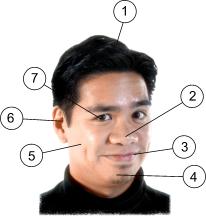

| book | books | |
| idea | ideas | |
| leg | legs | |
| village | villages | |
| choice | choices |
| lens | lenses | ||||||||||||||||||||||||||||||||||||||||||||||||||||||||||
| kiss | kisses | ||||||||||||||||||||||||||||||||||||||||||||||||||||||||||
| tax | taxes | ||||||||||||||||||||||||||||||||||||||||||||||||||||||||||
| dish | dishes | ||||||||||||||||||||||||||||||||||||||||||||||||||||||||||
| church | churches Los nombres singulares que se terminan en -y precedido por un consonante forman su plural al cambiar la -y por -i y añadir -es.
Pero: los nombres que se terminan en -y precedido por una vocal forman su plural usando la regla general. boy boys toy toys Generalmente, los nombres singulares que se terminan en -o precedido por un consonante forman su plural al añadir -es.
Generalmente, nombres singulares que se terminan con -f o -fe forman su plural al cambiar el -f a -v y añadir -es o -s.
Unos nombres que tienen -oo cambian a -ee.
Hay algunos nombres que forman su plural al cambiar -us por -i.
Hay tres plurales irregulares muy importantes.
|
 |
 |
 |